Flying High with the Tobacco King of East Hartford
East Hartford (Google Maps Location)
December 13, 2006
2015-19 Updates: The library closed for a huge renovation in 2014. As part of that renovation, this awesome little museum won’t really be a museum anymore. The artifacts are now displayed around the library in bits and chunks rather than in a dedicated space. I revisited in 2019 and the library is beautiful and the artifacts are fun to find all around. Just know that it is no longer presented as I enjoyed it in 2006.

Everyone has their own way of procrastinating. Some people knit, some people surf the internet, and some watch bad TV… And some go to museums. Well, at least one person does: me. I had taken a random Wednesday in December off way back in August under the premise that I would use the day to do my Christmas shopping. For me, that usually means going to Amazon.com for 20 minutes and clicking a few times. But this year I actually had a shopping list that forced me out of the house and into the wilds of suburban Connecticut’s shopping malls and box stores. Ugh.
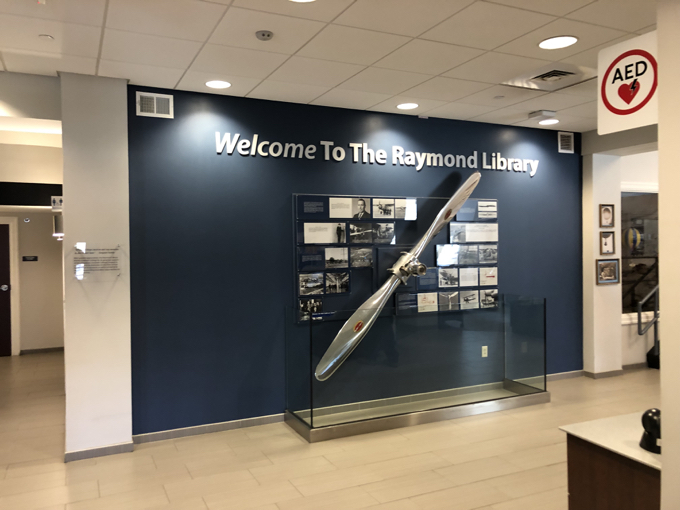
I awoke at my usual ridiculous pre-dawn time, helped Hoang and Damian get ready for their days like I always do, saw them off, and… Hopped online to shop at Amazon.com. Then I compiled my quite long to-do list for the day, threw on some clothes, and hit the road. First stop: pick up clothes at the dry cleaners. Looking at my list, my next stop was across town at the WalMart/Marshalls plaza to pick up some cheap trinkets for my team at work. (Hey, when shopping for 15 you gotta do what you gotta do – social conscience and snobbery be darned.)
“Hmmm,” I thought to myself, “I hate WalMart and I hate box stores in general and it’s only 9:30 AM and I happened to bring my camera…” I only had one option: Drive to East Hartford, find the town library on Main Street, and check out what the Edward E. King Museum contained within.
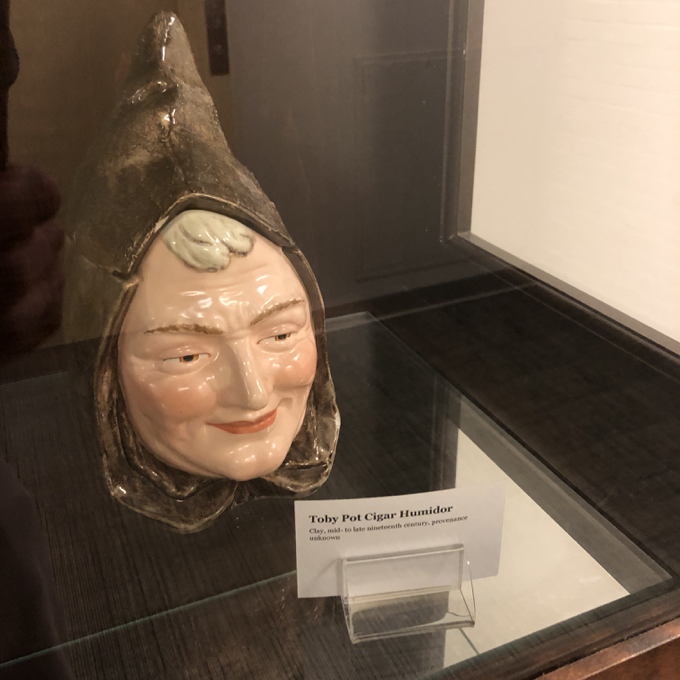
And so that’s exactly what I did – shopping could wait. After the 15 minute drive, I found the rather attractive Raymond Library easily and went inside. I had read that the museum was “on the second floor” but first I decided to compare East Hartford’s library to my own beloved West Hartford one. I’ll admit it, I was surprised at how nice the building was. For those of you who don’t know, stereotype dictates that West Hartford is snooty whereas East Hartford is hardscrabble and blue collar.

Art features in 2019
Case in point, one can walk to one of several fine dining establishments and order a few hundred dollars bottle of wine with a $100 stack of raw oysters within 5 minutes from West Hartford’s library’s card catalog. In East Hartford, one could walk to Kahoots – a strip bar underneath a highway overpass, and order a Bud bottle with some stale pretzels.. And in case I haven’t slurred those “East of the River” enough, here’s who was sitting in the middle of the reading room at the Raymond Library:
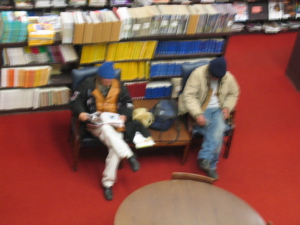
That’s right, Real life honest-to-goodness (rather apparent) homeless men. The picture is hopelessly blurry because I didn’t want to set off the flash and I didn’t want to take the time to set up a proper shot – lest I be caught doing so. The guy on the left was quiet but the guy on the right was suffering from some form of dementia and was yapping away.
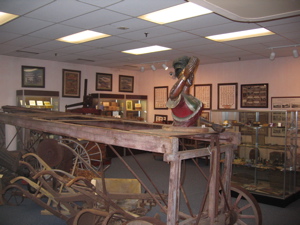
I left the stacks and made my way over to the other section of the library and up the steps to the museum. There were several nice paintings in the stairwell and hallway – turns out they were all part of a WPA project in the 1930’s. The hallway was dark but there was an old woman squirreled away in a cramped office who told me to “turn on the light switch” and the museum was all mine. ALRIGHT!
I was immediately confronted with a most difficult decision:
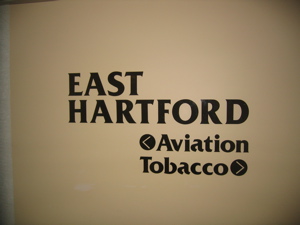
Let’s see, both get you high… Hmmm… I decided to go with Tobacco, as the one room display looked easier to digest. What I found was a bunch of old farm implements and a brief history of the local tobacco industry. The Connecticut River Valley was once a thriving tobacco producing region – one of the world’s finest. The leaf tobacco grown here was very mild and was used extensively in cigars made in the Caribbean. In fact, a bit further north up in the Windsor, CT area, leaf tobacco is still a profitable cash crop. I found this whole tobacco farming business very surprising when I first moved up here to Connecticut.
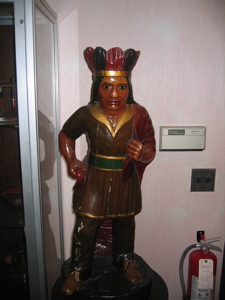
The museum’s namesake, Edward E. King, was born, raised, and died in East Hartford. He was essentially “Mr. East Hartford” and today a town pool and a housing project bear his name proudly. He donated the money for this museum so we could learn stuff like, “From about 1820 until 1880, tobacco production went from virtually nothing to 14 million pounds annually.” Some company named American Sumatra in East Hartford became the number one leaf tobacco grower in the world and their leaves were used for Havana Cigars.
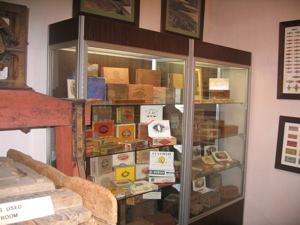
I noted the old cigar bands and boxes as well as a couple cigar store Indians. There were a few historic photographs of the old days and even some century-old matchbooks. I don’t know what else one could add to a tobacco history display, so I was pretty satisfied with what I’d learned. On to the Aviation section!
2019 Update: Kahoots is long closed by the way. All of this stuff still exists in the library’s collections, it just isn’t always displayed. Also, I was so cute back at only my fifth Connecticut museum visit. Little did I realize the many years of many tobacco museums and displays I’d be seeing over the next decades…
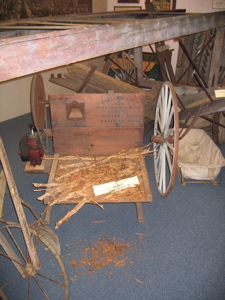
The Aviation portion jammed into a weird corner of the library and snaked around even though the square footage seemed to be less than that of the Tobacco section. First, I learned about the very early attempts at local flight – from balloons to gliders in the late 19th century. Neato.
Then things got interesting ’round these parts. Some smart guy named Frederick Rentschler left the Army and convinced a few guys that heavier but more powerful engines would be the future of aircraft. He contracted with a little company in East Hartford named Pratt and Whitney Tools to begin building his Wasp Engine. The next thing anyone knew, the Navy was ordering these Wasp engines faster than Pratt and Whitney could build them.
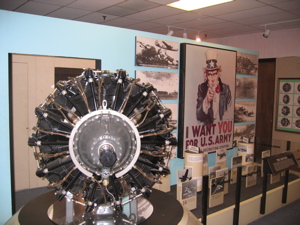
P&W went from a small machinist shop to a massive manufacturing complex overnight. They bought out a bunch of tobacco fields in East Hartford to do it and they instantly became a dominant international player. Over the next couple decades, P&W and Rentschler developed many relationships and forged the beginnings of a whole slew of still viable manufacturers today: Sikorsky, Vought, United Technologies, Hamilton Standard, and a little company named Boeing. Yes, all these companies were spawned right there in East Hartford. Rather amazing, actually.
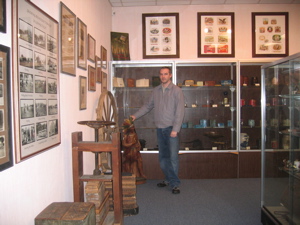
Throughout two world wars, P&W grew to be the largest manufacturer of military AND commercial jet engines. Hamilton Standard became the biggest propeller maker and Sikorsky the leading helicopter company. P&W developed the first practical jet engine which, as you all know, was the massively powerful axial-flow turbojet J57 engine. It was used in the B-52’s and it’s later “offspring” are still used in commercial jets all around the world.

This J57 model functions and is in the children’s section of the library in 2019. It is one of only 2 working models in the world; the other is at the Smithsonian.
After learning a bit more about the evolution of the turbofan and the J57, I breathed in the scent of the ancient dried tobacco leaves one last time, turned off the lights, and made my way to my car. Sure, I was off to box store nightmares and mall hysteria, but that was all okay now that I had another museum under my belt.
The 2014 remodel made a great library even better. Raymond Library is truly a gem; beautiful architecture, large, clean, bright, and full of cool town history. It is better than any West Hartford library. So there.
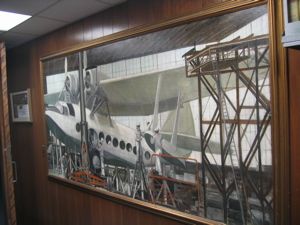
![]()
Raymond Library
CTMQ’s Museum Visits

 Bob Melusky says
Bob Melusky says
December 15, 2021 at 11:58 pmMy father worked on building model(s) when he was in Experimental Test. I have no idea which engine, though.